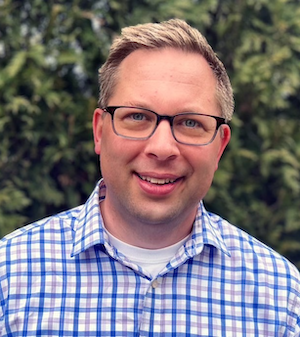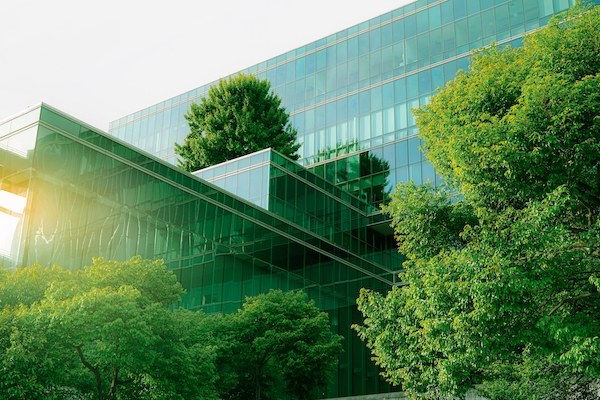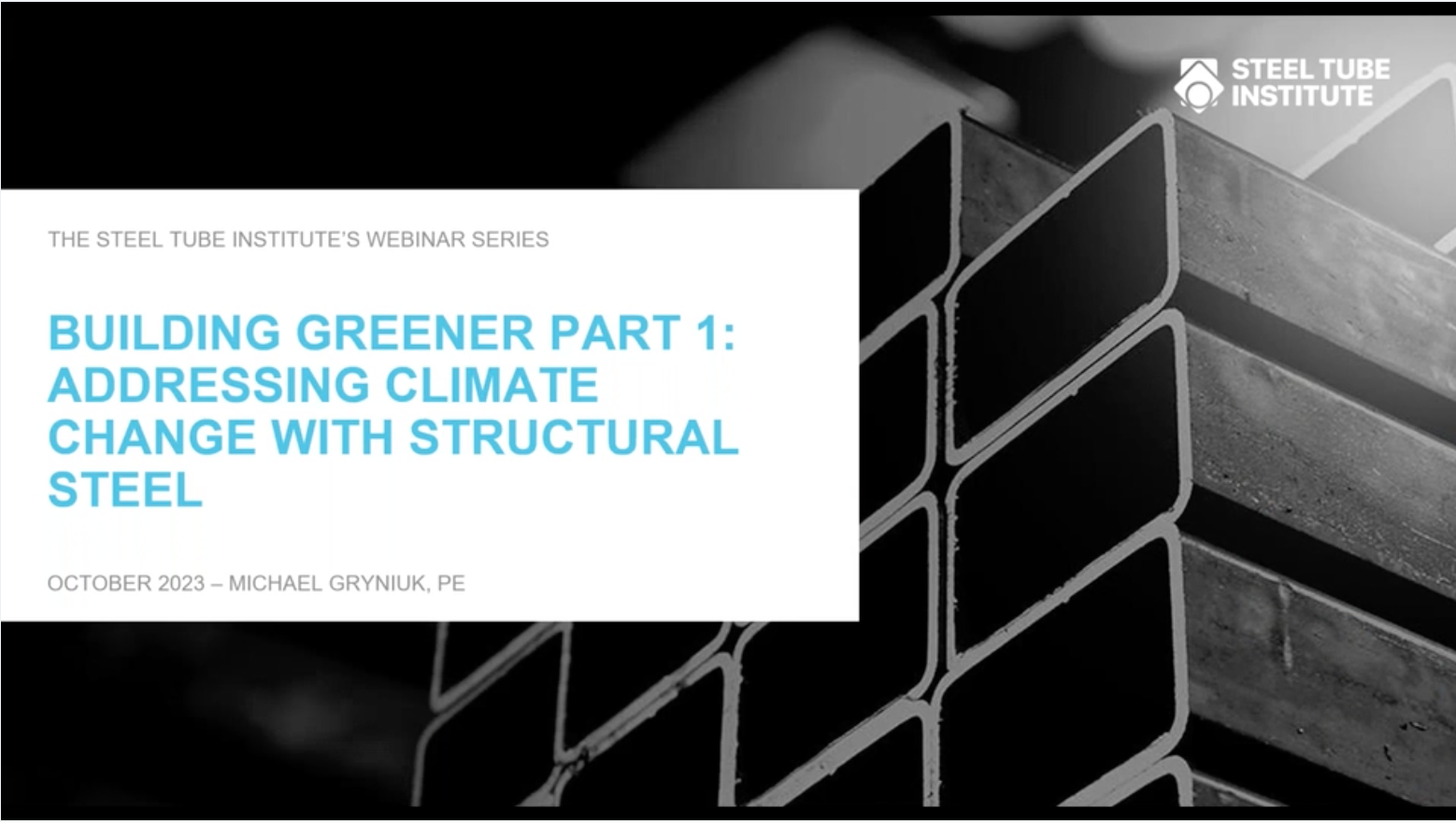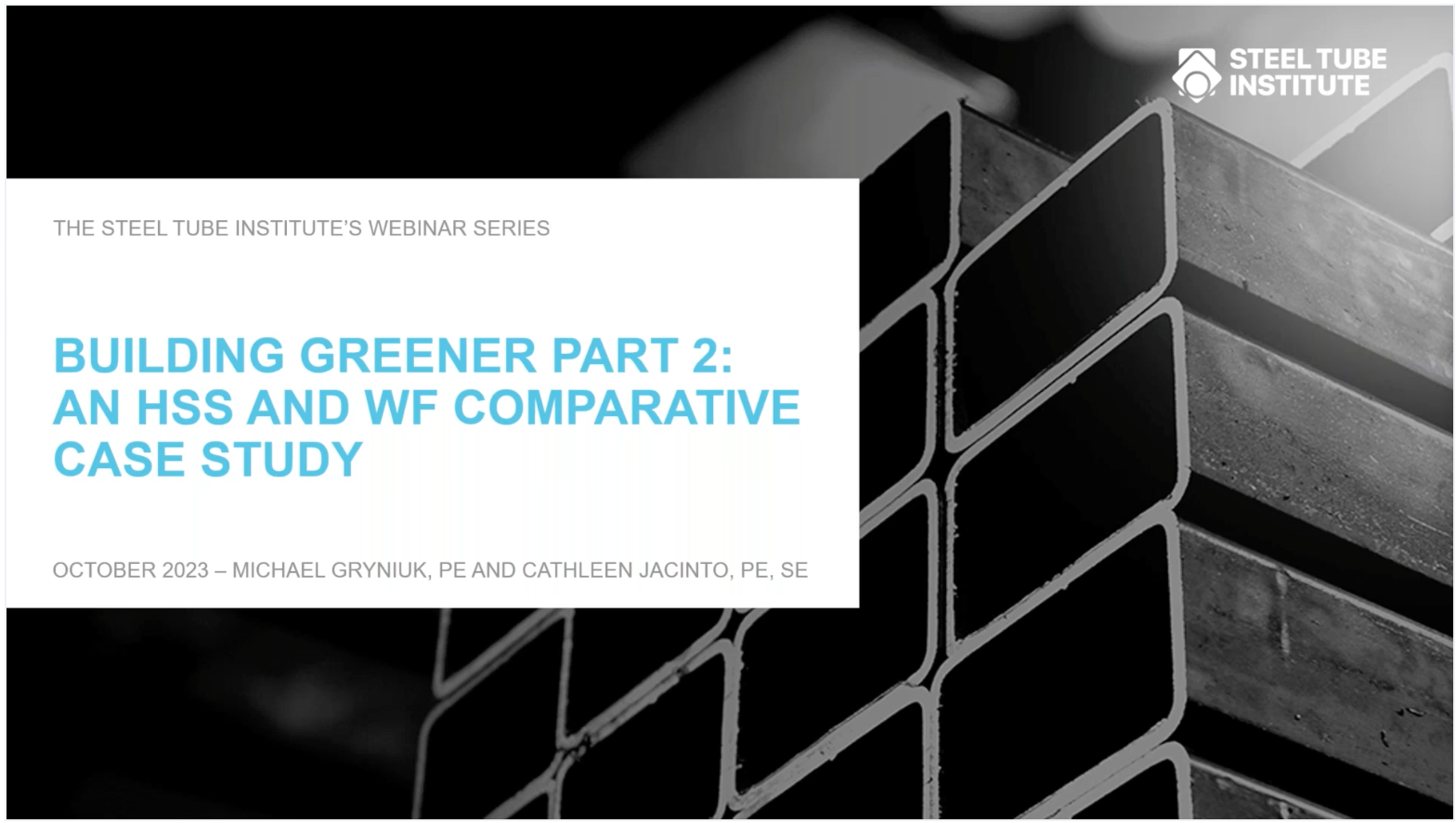Navigating Sustainability in Structural Engineering
Engineer Perspective: Michael Gryniuk, PE, Founder and Principal at CORA Structural, Chair and Co-Founder of SE 2050
In an exclusive interview with Michael Gryniuk, the founder and principal of CORA Structural, we delve into his journey through the world of structural engineering and his role in the Sustainability Committee of the Structural Engineering Institute (SEI). Gryniuk’s insights shed light on the significance of sustainability in the architecture, engineering and construction (AEC) industry; the SE 2050 Commitment Program; and the evolving landscape of sustainable structural engineering practices.
Q: Can you tell us about your current role and your career path to get there?

I’m currently the principal at CORA Structural, a firm I founded in March 2023, after accumulating 22 years of experience in the engineering industry. Additionally, I have the privilege of serving as the chair of the SE 2050 Commitment Program for SEI.
My journey into structural engineering began with a passion for bridges that developed during my high school years. This interest led me to pursue civil and environmental engineering in college, where I discovered my love for structural engineering through coursework. After completing my undergraduate studies, I gained practical experience at an engineering firm, where I specialized in designing small bridges — a job I thoroughly enjoyed.
As I continued to grow in my career, I felt the desire to further my education and went back to graduate school to earn a master’s degree in structural engineering. My master’s thesis focused on earthquake-resistant systems in moderate seismic regions, which sparked a deep interest in tall buildings and long-span structures.
Throughout my career, I had the opportunity to work on a wide range of engineering projects, including tall buildings and long-span structures, along with various other project types of different sizes and building typologies. As I reached the midpoint of my career, I began to reflect on the broader impact of my work in the context of society. While the projects I worked on were undeniably exciting and contributed to society’s well-being, I felt compelled to explore how I could reduce the environmental impact of the structural materials I was specifying.
This led me to investigate the environmental implications of materials like concrete and steel. During this period, I joined the Sustainability Committee of SEI, where I delved into the field of sustainability and the concept of embodied carbon in materials and structural systems. I was not only intrigued by how these materials were produced but also inspired by the possibility of working with them in a more environmentally friendly way without compromising structural integrity.
The introduction of the SE 2050 initiative to our committee resonated with me deeply. I realized that structural engineers could play a substantial role in reducing the environmental impact of the buildings we design and at scale. The convergence of these events within a relatively short time frame motivated me to take on this mission of promoting sustainability within the field of structural engineering.
Q: Can you tell us more about SEI and SE 2050?
SEI, or the Structural Engineering Institute, operates as one of the specialized technical institutes under the umbrella of the American Society of Civil Engineers (ASCE). SEI serves as the structural engineering arm of ASCE and plays a crucial role in advancing the field of structural engineering.
Within SEI, there are various committees, one of which is the Sustainability Committee. This committee focuses on addressing the sustainability challenges within structural engineering, particularly with regard to carbon emissions and environmental impact.
The SE 2050 initiative originated as a response to the pressing need for sustainability goals within the field. Ideated by the Carbon Leadership Forum, an organization affiliated with the University of Washington, SE 2050 draws parallel with AIA 2030, which aims to achieve net-zero operational energy in architecture by 2030. However, SE 2050 sets a specific target for structural engineers: to achieve net-zero embodied carbon in structural systems by the year 2050.
One of the key aspects of SE 2050 is the commitment that structural engineering firms can make. Firms signing this commitment pledge to explore and implement strategies to achieve net-zero embodied carbon in their structural systems by 2050. As part of this commitment, they are required to create and submit an annual embodied carbon action plan. This plan outlines their strategies and efforts to advocate, educate and promote reductions in embodied carbon in their projects. Furthermore, firms must adhere to a reporting requirement, providing data and information on the embodied carbon impact of real projects they work on.
The ultimate objective of SE 2050 is to establish benchmarks for different structural systems across various building types nationwide. These benchmarks will serve as a foundation for setting reduction targets, with the aim of reaching net-zero embodied carbon in structural engineering by the year 2050. In essence, SE 2050 is a vital initiative that not only acknowledges the environmental challenges posed by structural engineering but also provides a structured pathway to address them.
Q: Sustainability is sometimes used as a buzzword in the AEC industry. What are your insights on its relevance to structural engineering, architecture and fabrication, and why is it important?
Sustainability encompasses a wide array of principles, but for structural engineers, it’s intrinsically linked to embodied carbon. This concept revolves around the carbon emissions associated with manufacturing the materials we use, transport to different locations, installation and perhaps end-of-life considerations like demolition. By current projections, we need to eliminate these emissions entirely by 2050 and cut them in half by 2030.
The pressure to address embodied carbon is immense. It’s a relatively new concept, and yet it’s the number that demands immediate attention because nearly all of it has been emitted in a building before you turn the lights on. As structural engineers, we play a pivotal role in this endeavor due to the systems we design and their significant contribution to overall embodied carbon — about 50% for new buildings. We have to find ways to cut and ultimately eliminate all of it in a relatively short period of time in a way that doesn’t excessively burden the project’s cost or schedule and in no way compromises structural integrity.
We aren’t going to do it in a silo either. It’s imperative that we work with all members of the AEC industry including architects and fabricators to find holistic solutions together. Sustainability isn’t just a buzzword — it’s a fundamental and pressing concern in our industry.
Q: Can you tell us about recently enacted or upcoming policies that are poised to influence the approaches of engineers, architects and fabricators toward sustainability? How do you see the landscape evolving and its implications for industry practices?
In recent years, there has been a significant surge in policies aimed at addressing embodied carbon within the construction industry. This trend began with the introduction of the first Buy Clean legislation in California in 2017, and it has since gained momentum across the United States. What’s particularly noteworthy is that these policies are emerging at all levels of governance — federal, state and local.
We’ve seen local jurisdictions being aggressive in some pockets of the country, implementing measures and pushing for sustainability standards, which, in turn, has influenced state-level legislation. And state-level legislation is influencing other states to follow suit. This growing momentum is sending a clear signal to the industry that sustainability, particularly regarding embodied carbon, is a crucial concern that’s here to stay.
One notable aspect of these policies is that they extend beyond environmental considerations. Even for those who may not prioritize or fully believe in climate change, it’s essential to acknowledge the business implications of these developments. The construction and engineering sectors must adapt and prepare themselves for these evolving regulatory landscapes, not just from an environmental perspective but also from a business standpoint.
Q: From a bird’s-eye view, how would you describe the current state of sustainability in the AEC industry, its progress thus far and looking ahead to future goals?
From a bird’s-eye view, sustainability has become an integral and ever-present topic within the AEC industry. The current landscape is undeniably exciting as sustainability discussions permeate every facet of our work. However, while we’ve made impressive strides, we must ensure that the momentum translates into substantive and lasting change.
The progress made in addressing embodied carbon is indeed significant and a testament to the industry’s capacity for transformation. In the coming five to ten years, we can anticipate a profound shift in how we approach the design, construction and material sourcing for buildings. In fact, we are already witnessing the early stages of this transformation.
While celebrating our achievements is vital, it’s equally important to acknowledge the magnitude of the challenge we face. The ambitious goal of achieving zero emissions by 2050 and halving them in less than seven years necessitates a paradigm shift far beyond our current efforts. It’s crucial that we continue to innovate, collaborate and drive forward as the future of our industry, the environment and society depends on our ability to meet these critical sustainability goals.
Q: What would you recommend engineers and architects include in general notes or specifications to affect the way manufacturers develop construction materials to lower embodied carbon?
First and foremost, design teams should foster stronger relationships with contractors, suppliers and fabricators. Engaging in meaningful conversations and collaborations with these stakeholders before finalizing the general notes or specifications is critical. This proactive approach ensures that the design team fully understands the potential impacts of their choices on the project’s sustainability.
In terms of specific notes and specifications, one recommendation specifically related to steel would be to prioritize the use of domestic steel. Domestic steel is generally recognized as a cleaner and more sustainable steel product compared to its overseas counterparts, contributing to reduced embodied carbon.
Q: Are there tips you wish engineers knew when selecting materials to reduce embodied carbon?
When it comes to selecting materials to reduce embodied carbon, there are a few key tips I wish engineers knew. First and foremost, engineers should always keep in mind that the most effective way to reduce embodied carbon is by using less material. This simple but often overlooked principle can lead to significant improvements in sustainability. It’s essential to ensure that the chosen methods are the most efficient in terms of material usage.
Additionally, engineers need to actively embrace a paradigm shift. Instead of being passive observers, they must take a proactive role in this transition. Engaging in research and staying informed about sustainable materials and practices is crucial. Engineers should be at the forefront of these efforts.
A fundamental step is to explore the environmental impacts of the materials they intend to use. Online resources are readily available for this purpose, helping engineers make informed choices. However, it’s important to remember that making material comparisons, such as between concrete and steel, or between wide flange and HSS, isn’t as straightforward as comparing Environmental Product Declarations (EPDs). Engineers should evaluate materials in the context of their specific structural or functional equivalency, ensuring that the selected materials are used in both a material- and embodied carbon-efficient way with respect to the intended structural use for the design loads imposed.
Q: The technical article paired with this interview discusses steel, HSS and sustainability. Could you share your perspective on HSS and its role as construction material in lowering embodied carbon?
HSS (hollow structural sections) play a vital role as construction materials in reducing embodied carbon in building projects, particularly for axial loaded elements like columns and bracing. One of their standout advantages is their efficiency in terms of weight. In most cases, when you compare an equivalent HSS size to a wide flange member, the HSS member will have less tonnage. This means that right from the start, you can utilize HSS members to decrease the total tonnage in your project, which is a significant benefit for sustainability.
Now, it’s important to address a common concern regarding the EPDs for HSS and wide flange members. The data may show that HSS has a higher embodied carbon compared to wide flange members, but this can be misleading without proper context. To gain a more accurate understanding, it’s crucial to consider the embodied carbon per capacity of both HSS and wide flange members. In many instances, you’ll discover that HSS not only has less tonnage but also exhibits lower embodied carbon when considering the additional capacity it offers. Therefore, I encourage structural engineers to make this comparison while accounting for the extra capacity as it often reveals that HSS members contribute to lower embodied carbon in construction projects.
Q: Could you highlight any lesser-known facets of the sustainability of steel and HSS you find particularly surprising and impactful?
One aspect of the sustainability of HSS that may not be widely recognized but is particularly surprising and impactful is the efficiency in non-steel material use associated with HSS. When you compare the cross-sectional area of an HSS to an equivalent wide flange section, you’ll notice that the HSS has a much smaller perimeter. This means that if you were to use both exposed members, one wide flange and one HSS, the amount of paint or intumescent fireproofing required for the HSS member would be less. Additionally, HSS members are often more compact, which, while not a substantial difference, contributes to improved usable floor space.
Similarly, people tend to overlook the environmental impact associated with wrapping a column with materials like metal studs and gypsum board. By choosing HSS over traditional wide flange members, you not only reduce the need for paint but also minimize the amount of gypsum and wraps required for a particular element. This seemingly minor change can make a meaningful contribution to lowering the overall embodied carbon in a building when considering the number of columns in a building.
In addition to these material and embodied carbon benefits, the aesthetics of exposed HSS members tend to be more visually appealing because they are closed sections and typically have smaller and more compact end connections. Both can enhance the architectural design.
Q: Could you talk a little bit about the recyclability of steel?
Steel stands out among structural materials due to its remarkable recyclability. What sets it apart is the assurance of a continuous recycling cycle. Almost all the steel used in today’s building projects will be returned to the recycling system rather than ending up in landfills, offering a reassuring sustainability advantage. Steel can be recycled an infinite number of times without any loss of quality. This is a feature that distinguishes steel from other nonferrous structural materials, which may lack a clear end-of-life recycling pathway.
Q: Several states, such as California, Colorado and Oregon, have or are developing Buy Clean legislation. What are your thoughts on these programs for the steel industry?
The implementation of Buy Clean legislation in states like California, Colorado and Oregon is a positive step toward achieving a net-zero society. These programs, which place restrictions on the global warming potential of materials used in construction, are essential for addressing our carbon goals and driving industry change. They serve as a necessary policy lever to catalyze the steel industry’s response and align it with national commitments to reduce carbon emissions.
However, it’s crucial to emphasize that Buy Clean legislation should complement a holistic approach to carbon reduction in the construction sector. While these policies set standards for material procurement, they must be part of a broader strategy. Design teams should not rely solely on Buy Clean to reduce the embodied carbon of their buildings. To achieve the best outcomes, they need to combine Buy Clean with a proactive approach during the design phase. The ideal scenario involves incorporating sustainable design improvements alongside the implementation of Buy Clean procurement policies, resulting in a more significant reduction of carbon emissions in the construction industry.
Q: Do you have any key takeaways for structural engineering students to learn about sustainability and reducing embodied carbon?
First and foremost, seek out mentors and allies who share your vision and are willing to provide support and guidance as you navigate your career. Surround yourself with individuals who understand the importance of patience and perseverance on the path to achieving your goals.
Another essential aspect is to maintain an inquisitive mindset and not hesitate to ask questions. Embrace the process of trying various approaches, and be prepared to accept occasional setbacks as part of the learning journey. This willingness to learn from failures is one of the most effective ways to drive improvements, whether in sustainability or your professional growth.
Additionally, self-awareness is crucial. Before making significant strides in your sustainability efforts or career, take the time to truly understand yourself, your values and your objectives. This self-knowledge will guide you in focusing your energy on endeavors that align with your aspirations and avoiding distractions that do not contribute to your goals.
Lastly, expand your horizons by engaging with a diverse range of people and resources. Initiate conversations with as many individuals as possible. Be open to trying new things, even those that may not appear directly related to your intended path. Throughout your life, you’ll discover that unexpected opportunities can arise from these experiences. In the realm of sustainability, there are numerous individuals ready and willing to offer their assistance and expertise.

Optimizing Sustainable Structures With HSS: A Comprehensive Guide

Building Greener Part 1: Addressing Climate Change With Structural Steel
